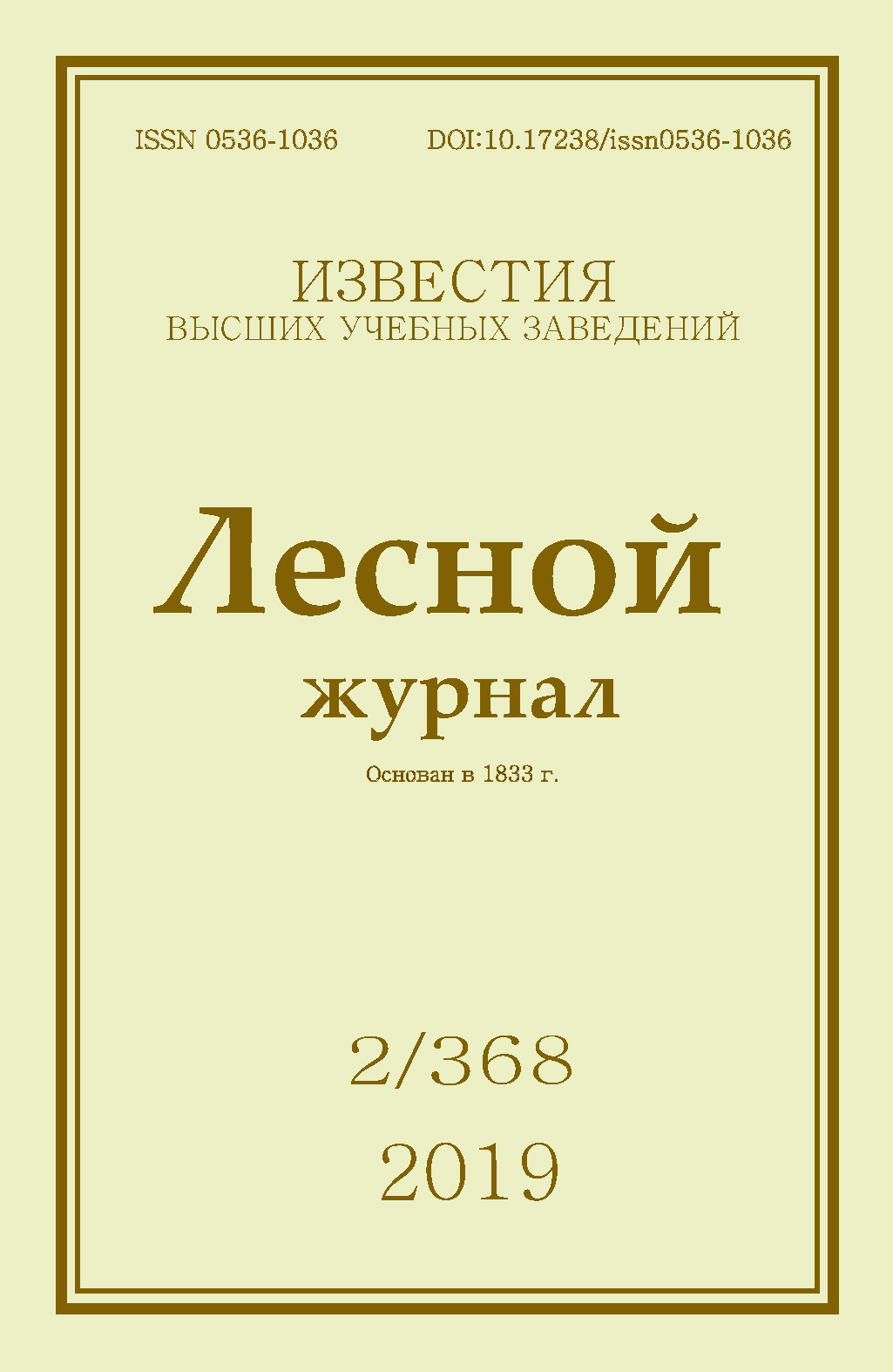Structure Deformation Features of Molded Pulp Products
DOI:
https://doi.org/10.17238/issn0536-1036.2019.2.119Keywords:
molded pulp, fiber, cellulose, coarse, screening wastes, stretching, compression, bendingAbstract
Molded pulp products in comparison with products made of traditional raw materials are resource saving and environmentally friendly. Nowadays, they are increasingly used as alternative primary package and auxiliary packaging materials instead of polymer materials. Waste paper fibers as well as cellulose fibers obtained from wood and annual plants are the raw materials for the manufacturing of such products. As another potential fiber source for molded products we consider fibers of coarse screening waste (screening) formed during the sulphate hardwood or softwood pulp production. These rejected materials are large-tonnage (up to 0.5 – 1.0 % of the gross weight after pulping). Such wastes can be disposed of in multi-fuel boilers with getting heat and electrical energy and then redirected to pulping, refined with afterward return to the main stock flow or used in the composition of different types of cardboard. However, they are mainly stored in industrial waste landfills of enterprises. Cells for growing and planting of forest crop seedlings with the closed root system can be considered as one of the simplest and most popular types of molded articles made of screening. These cells do not have special requirements for the quality of molding. However, in order to use molded articles efficiently for reforestation purposes, it is necessary to study the strength and deformation properties of the structure of molded articles made of various raw materials. Model laboratory samples of molded cells made of coarse screening waste fibers refined from 16 to 20 Shopper-Riegler grinding degrees were studied. The basic physicomechanical characteristics of the material of products with 400 g weight of 1 m2 under stretching, compression and bending, as well as the characteristics during compression of the molded products are determined. A linear dependence between deformation and strength characteristics of the molded articles and the similar characteristics of their wall’s material is detected.
Acknowledgements: The equipment of the Engineering and Innovation Center “Advanced Northern Bioresources Processing Technologies” (Northern (Arctic) Federal University named after M.V. Lomonosov) created with the financial support of the Russian Ministry of Education and Science was used.
For citation: Potashev A.V., Gur’ev A.V., Filippov I.B., Moseev V.G. Structure Deformation Features of Molded Pulp Products. Lesnoy Zhurnal [Forestry Journal], 2019, no. 2, pp. 119–129. DOI: 10.17238/issn0536-1036.2019.2.119
Downloads
References
Комаров В.И. Деформация и разрушение волокнистых целлюлознобумажных материалов: моногр. Архангельск: АГТУ, 2002. 440 с.
Пат. 2634235 Российская Федерация. Способ переработки отходов сортирования сульфатной целлюлозы в формованные изделия / А.В. Гурьев, А.В. Поташев; САФУ им. М.В. Ломоносова. № 2016144373; заявл. 11.11.2016; опубл. 24.10.2017.
Поташев А.В., Гурьев А.В. Физико-механические свойства структуры формованных изделий из отходов сортирования сульфатной целлюлозы // Системы, методы, технологии. 2017. № 3(35). С. 120–126. DOI: 10.18324/2077-5415-2017-3-120-126
Eagleton D.G., Marcondes J.A. Cushioning Properties of Moulded Pulp // Packaging Technology and Science. 1994. Vol. 7, iss. 2. Pp. 65–72. DOI: 10.1002/pts.2770070203
Gurav S.P., Bereznitski A., Heidweiller A., Kandachar P.V. Mechanical Properties of Paper-Pulp Packaging // Composites Science and Technology. 2003. Vol. 63, iss. 9. Pp. 1325–1334. DOI: 10.1016/S0266-3538(03)00104-0
Hoffmann J. Compression and Cushioning Characteristics of Moulded Pulp Packaging // Packaging Technology and Science. 2000. Vol. 13, iss. 5. Pp. 211–220. DOI: 10.1002/1099-1522(200009)13:5<211::AID-PTS515>3.0.CO;2-0
Ji H., Wang H. Short Span Compressive Stress-Strain Relation and Model of Molded Pulp Material // Key Engineering Materials. 2011. Vol. 450. Pp. 202–205. DOI: 10.4028/www.scientific.net/KEM.450.202
Ma X., Soh A.K., Wang B. A Design Database for Moulded Pulp Packaging Structure // Packaging Technology and Science. 2004. Vol. 17, iss. 4. Pp. 193–204. DOI: 10.1002/pts.658
Wang Z.-W., Li X.-F. Effect of Strain Rate on Cushioning Properties of Molded Pulp Products // Materials and Design. 2014. Vol. 57. Pp. 598–607. DOI: 10.1016/j.matdes.2014.01.019







